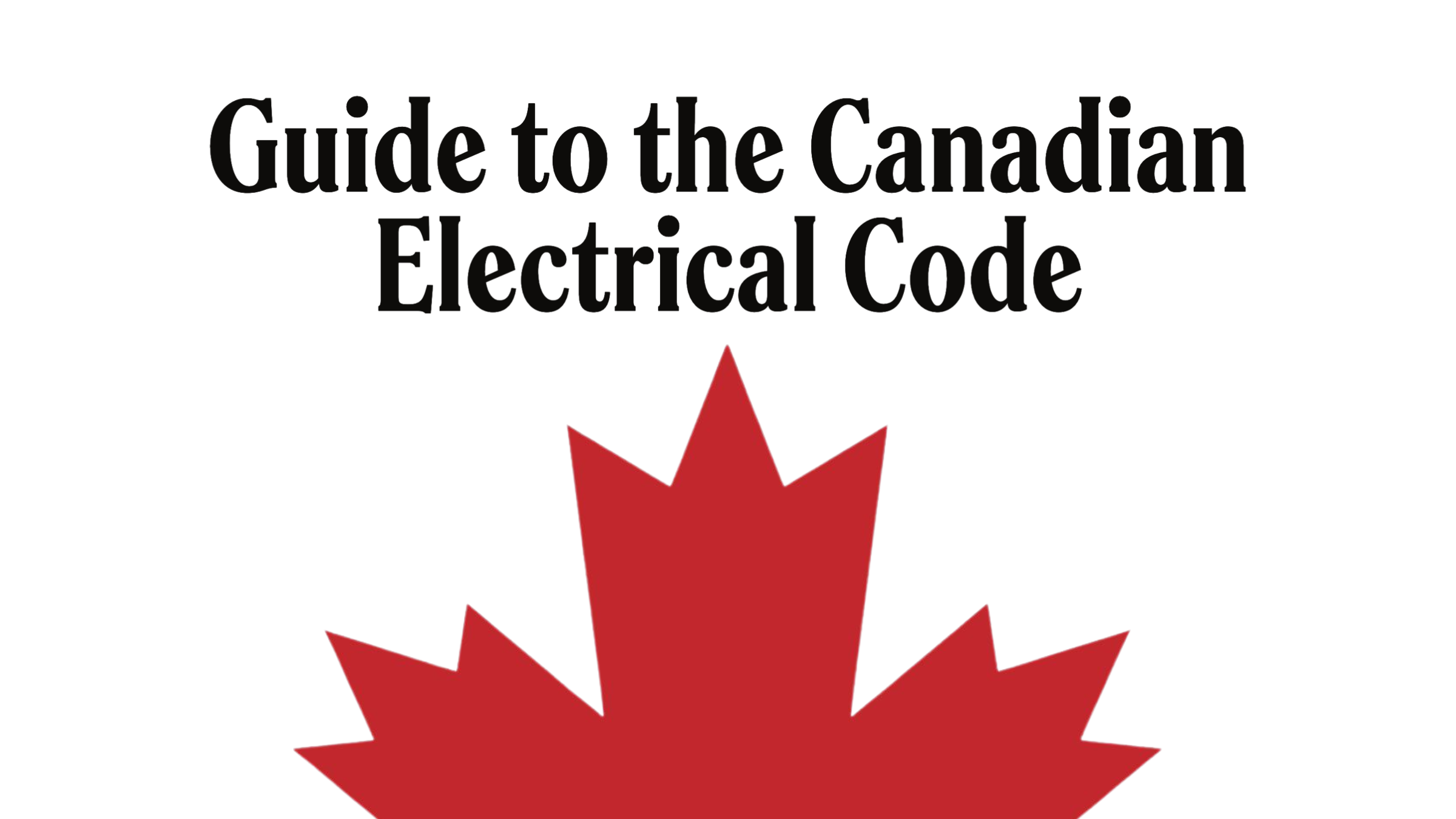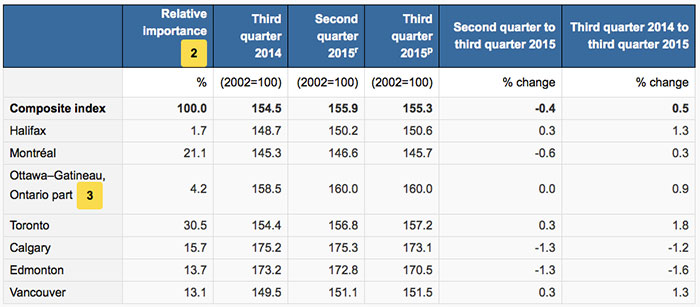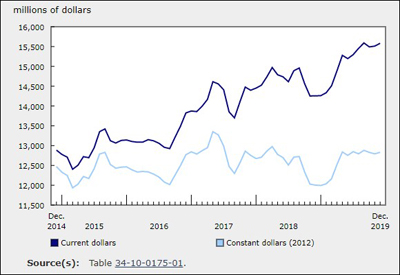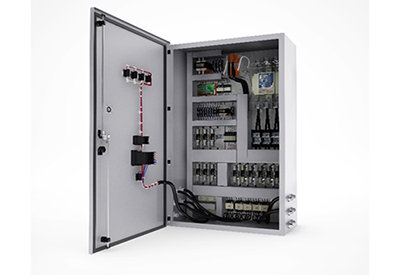Guide to the Canadian Electrical Code, Part 1[i], 26th Edition– A Road Map: Section 18 Hazardous Locations

September 9, 2024
By William (Bill) Burr[ii]
The CE Code is a comprehensive document. Sometimes it can seem quite daunting to quickly find the information you need. This series of articles provides a guide to help users find their way through this critical document. This is not intended to replace the notes in Appendix B, or the explanations of individual requirements contained in the CEC Handbook but will hopefully provide some help in navigating while reading the code.

Section 18 Hazardous locations – Instalment 10
Section 18 covers installation of electrical equipment in hazardous locations as defined in Section 0, as areas in which there is a potential for the ignition of explosive gases or combustible dusts, fibres or flyings due to the design, installation, or use of electrical equipment.
Rule 18-000 outlines the scope of this section, which is a supplementary section of the code and as such outlines additional or supplementary requirements for the selection and installation of electrical equipment in hazardous locations. In addition, Section 18 uses the international zone system of area classification; however, in cases of addition or renovation to an existing installation previously classified to the Division system, the electrical equipment may be chosen and installed in accordance with Annexes J18, J20 and Appendix J – For existing installations using the Class and Division system of classification of the code. Also note that additional information is available in Appendices B, F, L and Table 18.
Rule 18-002 provides special terminology definitions for terms used in this Section 18, which are additional or supplementary to the definitions in Section 0.
Rule 18-004 divides the hazardous classifications into explosive gas atmospheres or explosive dust atmospheres. In addition, the Equipment Group designation, and the minimum ignition temperature are included. Reference material for area classification can be found in Appendices B, F, J, and L and Table B18-1. To use Section 18, the classification of the area in which you are working must be determined by qualified persons and authenticated by a person assuming responsibility for the classification.
Note that installations within the scope of Section 20 – Flammable liquid and gasoline dispensing, service stations, garages, bulk storage plants, finishing processes, and aircraft hangarsare classified under that section.
Rule 18-006 Locations containing an explosive gas atmosphere are divided into zones 0, Zone 1, or Zone 2 depending on the frequency of occurrence and duration of an explosive gas atmosphere. Appendix B and L provide typical examples of explosive gas atmosphere classifications.
Rule 18-008 locations containing an explosive dust atmosphere are divided into Zones 20, Zone 21, or Zone 22 depending on the frequency of occurrence and duration of an explosive dust atmosphere. Appendix B and L provide typical examples of explosive dust atmosphere classifications.
Rule 18-010 specifies that alterations or repairs to equipment must be authorized and must not be made to live equipment. In addition, this rule specifies that electrical equipment in hazardous locations must be maintained in its original safe and operable condition with unused enclosure openings suitably closed. Again, Appendix B provides additional guidance in developing proper maintenance procedures.
General
Rules 18-050 to 18-078 apply to all hazardous location installations, both explosive gas and explosive dust atmospheres.
Rule 18-050 specifies that the code requires that electrical equipment used in Zone 0, Zone 1, or Zone 2 locations be suitably designed, tested, and certified for the specific explosive atmosphere that will be present with the type of protection as Group IIC, Group IIB or Group IIA.
This rule also provides groupings of electrical equipment with the type of protection Group IIIC, Group IIIB and Group IIIA used in Zone 20, Zone 21 and Zone 22 combustible dusts and fibres for which electrical equipment must be suitable.
It also provides a hierarchy wherein electrical equipment suitable for a preceding group may also be suitable for a latter group. In addition, where equipment is marked for use in Class/Division locations but will be used in locations classified according to the Zone system as permitted by Table 18, the applicable Group of the Division system must correspond to the equivalent Group within the Zone system as specified in Table 18A.
Rule 18-052 lays out the marking requirements on electrical equipment intended for use in hazardous locations. Additional information on marking is listed in Appendix B.
Rule 18-054 requires that in Zone 0, 1 and 2 locations, equipment with a marked internal or external surface temperature, (or 100 degrees C, if not marked), equal to or higher than the ignition temperature of the combustible gas, must NOT be installed in that location. This is true even for equipment that is not required to be approved for hazardous locations. Note that Equipment installed in Zone 2 locations must have surface temperatures that, at any point on the equipment that may be exposed to an explosive gas atmosphere, must not exceed the minimum ignition temperature determined for Zone 2 locations in which the equipment is intended to be installed.
In Zone 20, 21, and 22 locations, equipment with a marked external surface temperature equal to or higher than the lower of the dust cloud or dust layer ignition temperature, must NOT be installed in that location. While there is no definition of ignition temperature in this section, Table 18 provides a summary of what equipment types are suitable for installation in the various hazardous locations.
Rule 18-056 requires that every separate area, section, or room must have its own hazardous location classification.
Rule 18-058 requires that if equipment rooms are intended not to be classified as hazardous locations, they must be constructed of substantial, non-combustible materials and in such a way to ensure they remain hazard free. Where the equipment room communicates with a Zone 2 or an explosive dust atmosphere, it must be separated by close-fitting, self-closing doors. Where the equipment room communicates with a Zone 1 location, it must be considered a Zone 2 location unless ventilation and safeguards are in place as per Rule 18-002 and the definition of a Zone 2(b).
Rule 18-060 notes that when using metal-covered cable in hazardous locations, caution must be taken to ensure that any lightning related voltage surges on mineral-insulated cable are limited to 5 kV, or circulating currents on single conductor armoured cable are eliminated.
- For the former, this is accomplished using surge suppressors,
- For the latter, through bonding the metal sheaths together, at intervals of 1.8 m or less.
- Alternatively, insulation jacketed cables can be used, but the metal armour must be bonded to ground in the hazardous location and isolated in the non-hazardous location.
Rule 18-062 permits optical fiber cable types OFNP, OFCP, OFNR, OFCR, OFNG, OFCG, OFN and OFC to be installed in all hazardous locations, provided that the installation meets applicable sealing requirements of Section 18.
Rule 18-064 specifies that equipment rooms can be exempted from rules 18-100 to 18-158 if a continuous pressurized protective gas atmosphere is maintained. Appendix B has references to consult in accomplishing this. Note also that procedures must be in
place to eliminate any possibility of an ignition source if pressurization fails.
Rule 18-066 specifies that intrinsically safe and non-incendive electrical equipment and wiring installed in a hazardous location be provided with and be installed in accordance with a descriptive system document, and
- be installed in a raceway, cable tray, compartment, enclosure, outlet, junction box, or similar fitting, separated by:
- a spacing of 50 mm or more,
- a metal armour or sheath of cable assemblies,
- a grounded metal barrier not less than 1.34 mm (No. 16 MSG) thick, or
- a non-metallic insulating material not less than 1.5 mm in thickness.
- be installed in the same raceway, cable tray, compartment, outlet, junction box, or multi-conductor cable where the insulated conductors of each circuit are within grounded electrically conductive shields, braids, or sheaths; or have minimum 0.25 mm thick insulation.
- be installed to minimize migration of flammable fluids to other locations.
- have all apparatus identified as part of the system, and all wiring be identified with permanently affixed labels, or colour coded light blue where no other cables or insulated conductors coloured light blue are used at each terminal and junction box. See Appendices B and F for additional information.
Rule 18-068 requires that cable trays be installed in such a way to avoid a build-up of dust on cables.
Rule 18-070 allows that in Zone 1 or 2 locations, non-hazardous, non-arcing, sparking, or heat producing equipment may be installed where no specific equipment suitable for the purpose exists and there is a detection system that continuously monitors the area and:
- activates an alarm,
- activates ventilation equipment, or
- de-energizes electrical equipment if a gas concentration reaches a percentage of the lower flammable limit (LFL). The percentage depends on the existence and continued operation of a ventilation system. Refer to Appendices B and H for additional information and application.
Rule 18-072 outlines the requirements for seals and specifies that where electrical equipment is in contact with flammable fluids an included:
- The process seal and the electrical equipment that incorporates such a seal must be constructed or installed to prevent any migration of such fluids through the wiring system.
- If this is accomplished using a secondary process seal, an indication or warning marking is required in case the primary process seal fails.
- Flammable fluid migration seals must be permanently identified and where field installed must be accessible after installation.
- Splices and taps must not be made in fittings intended only for sealing with compound.
- Other fittings in which splices or taps are made must not be filled with compound.
- Where there is a probability that liquid or other condensed vapour may be
trapped within enclosures for control equipment or at any point in the raceway system, acceptable means must be provided to prevent accumulation or to permit periodic draining of such liquid or condensed vapour. (Appendix B and Table B-1 have additional extensive information on the use of seals)
Rule 18-074 reasserts that the rules of Section 10 – Grounding and Bonding apply to hazardous locations. Additionally, where rigid metal conduit is used, threaded couplings and bosses on enclosures made up tight are required, unless incorporating internal
bonding conductors sized in accordance with Rule 10-616.
Rule 18-076 specifies that no uninsulated exposed parts of an electrical installation or of electrical equipment such as electrical conductors, buses, terminals, or components may be exposed unless they are:
- protected by type of protection “ia,” “ib,” “ic”, or “nA” suitable for the location and
- operate at less than 15 V in wet locations; and 30 V in other than wet locations; or
- installed as provided for in Rule 18-250 2) for electric cranes, hoists, and similar equipment in a Zone 22 location.
Rule 18-078 requires that threaded joints that are required to be explosion-proof, flameproof “d”, or flameproof “db” may be either tapered or straight and must comply with the following:
- tapered threads shall have at least 4-1/2 fully engaged threads, and running threads shall not be used.
- metric straight threads shall have a class-of-fit 6g/6H or better and at least 5 fully engaged threads, and
- where thread forms differ between the equipment and the wiring system, suitable adapters must be used.
Explosive gas atmospheres
Rules 18-090 to 18-158 apply to the installation of electrical equipment in all locations where explosive gas may be present.
Installations in Zone 0 locations
Rule 18-090 outlines that Zone O is the hazardous location where explosive gas atmospheres are present continuously or for long periods and is the most restrictive location. No electrical equipment or wiring may be installed in a Zone 0 hazardous location unless it meets the requirements of Rule 18-092. Also note the equipment protection level (EPL)and the type(s) of explosion protection marking requirements for Zone 0. (see Appendices B and F)
Rule 18-092 specifies that circuits terminating in a Zone 0 location must be intrinsically safe, however,
- a cable which has a continuous metallic or non-metallic outer jacket and is marked “HL” that contains one or more circuits that are not intrinsically safe may pass through a Zone 0 location, provided that:
- it passes completely through the Zone 0 area with no fittings or connections within the Zone 0 location, and
- it is protected from mechanical damage by a raceway or other effective means within the Zone 0 area.
- Threaded rigid metal conduit that contains one or more circuits that are not intrinsically safe may pass through a Zone 0 location, if it passes completely through the Zone 0 location with no fittings, couplings or connections within the Zone 0 location.
Rule 18-094 requires that where a conduit run that contains circuits in accordance with the above Rule 18-092 terminates in a Zone 0 location, a flammable fluid migration seal must be installed with an uninterrupted conduit run between the seal and the point at which the conduit crosses the Zone 0 boundary. In addition, flammable fluid migration seals must be provided on cables at the first point of termination after entry into the Zone 0 location.
Installations in Zone 1 locations
Rule 18-100 outlines that electrical equipment installed in a Zone 1 location shall be in accordance with Table 18. (also see Appendices B and F)
Rule 18-102 requires that wiring methods, in Zone 1 must be:
- threaded rigid metal conduit with explosion-proof, flameproof “d,” or flameproof “db” fittings.
- hazardous location cables with associated cable glands suitable for the application.
- explosion-proof, flameproof “d,” or flameproof “db” boxes, fittings, and joints must be threaded for connection to conduit and cable glands.
- conduit and cable entries into increased safety “e” enclosures must be made to maintain the Ex e protection of the enclosure as well as its degree of protection, and such entries shall be by means of:
- increased safety “e” conduit hubs.
- increased safety “e” cable glands; or
- cable glands suitable as an explosion seal.
- Where a cable gland entry to an increased safety “e” enclosure is through a clearance hole, an O-ring, sealing washer, or sealing locknut must be used to maintain the degree of protection.
- Cables must be installed and supported to avoid tensile stress at the cable glands.
- wiring methods for intrinsically safe equipment and associated circuits designed
and installed as “ia,” “ib,” or intrinsically safe for Class l locations are exempt from the requirements of the above first two bullet points.
Rule 18-104 outlines sealing requirements for Zone 1 and specifies:
- Except for raceways or cable systems for wiring of intrinsically safe or non-incendive equipment, explosion seals must be provided in wiring systems where the conduit or cable enters an explosion-proof, flameproof “d”, or flameproof “db” enclosure that contains devices which produce ignition-capable arcs or temperatures; or where the conduit is 53 trade size or larger.
- An explosion seal is not required for a wiring system passing through a Zone 1 area uninterrupted and the termination points are in a Zone 2 or non-hazardous location; or in conduit systems where the conduit enters an explosion-proof enclosure if the enclosure does not contain devices that produce ignition-capable arcs or temperatures, or the enclosure is marked “Factory Sealed” or “Seal Not Required”, or the conduit is smaller than 53 trade size.
- An uninterrupted conduit run is that portion of a conduit run which except for having conduit couplings installed, must not have any equipment, box, fitting, union, tee, or similar device installed in the conduit run.
- Where conduit or cable explosion seals are required for an enclosure, they must be located as close as practicable to the enclosure, or as marked on the enclosure; and no further than 450 mm from the enclosure.
- Where a conduit or cable run crosses a Zone 1 boundary and terminates in the Zone 1 area:
- an explosion seal must be installed in the conduit run within the Zone 1 location, or no more than 1 m external to the Zone 1 boundary; and
- the conduit run must be uninterrupted between the explosion seal and the point of termination within the Zone 1 location; and the point at which the conduit crosses the Zone 1 boundary.
- Only explosion-proof, flameproof “d,” or flameproof “db” unions, reducers, and elbows that are not larger than the trade size of the conduit may be installed between the explosion seal and an explosion-proof, flameproof “d,” or flameproof “db” enclosure.
- A flammable fluid migration seal must be provided where a cable first terminates after entering the Zone 1 area.
- Explosion seals must be provided in a cable system where the cable enters an enclosure required to be explosion-proof, flameproof “d”, or flameproof “db”.
- Runs of cables, each having a continuous sheath, either metal or non-metal, may pass through a Zone 1 location without seals.
Rule 18-106 specifies that increase safety “eb” motor installations in Zone 1 must meet the requirement for thermal protection of motors contained in IEC 60079-14.
Rule 18-108 outlines the installation rules for Luminaires in Zone 1:
- Each luminaire must be protected by a suitable guard or by location.
- Pendant luminaires suspended by and supplied through threaded rigid conduit stems and threaded joints must be provided with set screws or other effective means to prevent loosening; and for stems longer than 300 mm, be provided with
- permanent and effective bracing against lateral displacement at a level not more than 300 mm above the lower end of the stem; or
- flexibility in the form of a fitting or flexible connector suitable for the purpose and for the location not more than 300 mm from the point of attachment to the supporting box or fitting.
Rule 18-110 allows that flexible cords are permitted in Zone 1 where flexibility is required for connection between a portable lamp, or other portable utilization equipment, and the fixed portion of its supply circuit but the flexible cord must:
- be of the extra-hard-usage type and contain in addition to the insulated conductors of the circuit, a bonding conductor:
- be provided with a sealing gland where the flexible cord enters a box, fitting, or enclosure that is required to be explosion-proof or flameproof “d”; and
- where entering an increased safety “e” enclosure, be terminated with a suitable increased safety “e” cord connector.
In addition, flexible cord may also be used for that portion of the circuit where fixed wiring methods cannot provide the necessary degree of movement for fixed and mobile electrical utilization equipment and, where used, must meet all the requirements above and be protected from damage by location or by a suitable guard.
Installations in Zone 2 locations
Rule 18-150 provides the rules for the installation of equipment in Zone 2. Note that equipment suitable for Zone 0 and Zone 1 are permitted to be installed in Zone 2. In addition, the following equipment may be installed:
- transformers, solenoids, and other non-arcing, non-sparking or non-heat-producing devices.
- capacitors that do not have integral fuses.
- devices used for instrumentation and measurement purposes, including thermocouples, resistance temperature detectors (RTDs), piezoelectric pressure transducers,
- accelerometers, resistive strain gauges, passive radio frequency identification (RFID) tags, and similar equipment.
- conduit and cables as specified in Rule 18-152
- equipment that is installed in a Type 4 or 4X enclosure, or an IP65 or higher enclosure, and is non-sparking in normal operation; and not used for heating purposes.
- fuses, where they are used for the protection of equipment subject to overload during normal operation and are:
- of the current-limiting, non-indicating, filled type; or
- of the current limiting, indicating, filled type constructed in a manner such that the blown fuse indication does not cause the fuse body to be penetrated; or
- short-circuit protection only.
- motors and generators of the open or non-explosion-proof type that:
- do not incorporate arcing, sparking, or heatproducing components; or
- incorporate arcing, sparking, or heat-producing components that comply with the requirements of Rule 18-100.
- The motors and generators referred to above may contain anticondensation heaters suitable for non-hazardous locations, provided that they:
- do not use arcing or sparking components.
- do not use temperature-limiting controls.
- comply with the requirements of Rule 18-054 under normal operating conditions; and
- are marked on a separate nameplate on the machine with the maximum surface temperature of the heater in degrees Celsius; or a temperature code that indicates the maximum surface temperature.
- Motors and generators referred to above that contain a sliding contact shaft bonding device suitable for non-hazardous locations may be used provided that:
- the device is used for the purpose of maintaining the rotor at ground potential.
- the potential discharge energy is determined to be non-incendive for the application; and
- the potential discharge energy calculation is documented and authenticated by the person assuming responsibility for the calculation.
Rule 18-152 provides rules for wiring methods in Zone 2 and includes:
- threaded rigid metal conduit.
- hazardous location cables.
- Tray cables in accordance with Rule 12-102 3).
- armoured and metallic sheathed cables with an overall jacket, in accordance with Rule 12-102 3).
- Non-armoured control and instrumentation cable (CIC), and non-armoured fire alarm and signal cables (FAS), provided that:
- the installation is in cable tray in accordance with Rule 12-2202 3).
- the voltage rating of the cable is not less than 300 V.
- the circuit voltage is 150 V or less; and
- the circuit current is 5 A or less.
- rigid RTRC conduit Type XW, provided that:
- boxes, fittings, and joints are marked with the suffix “-XW;” and
- installation is performed in industrial establishments that are not accessible to the public and where only qualified persons service the installation.
- liquid-tight flexible metal conduit and connectors, marked for heavy duty.
In addition:
- explosion-proof, flameproof “d”, or flameproof “db” boxes, fittings, and joints must be threaded for connection to conduit and cable glands.
- Cables shall be installed and supported to avoid tensile stress at the cable glands.
- Boxes, fittings, and joints need not be explosion-proof or flameproof “d”, except as required by the Rules in this Section.
- Cable glands must be compatible with the degree of protection and explosion protection provided by the enclosure that the cable enters, where the area classification and environmental conditions require these degrees of protection.
- Wiring methods for intrinsically safe equipment and associated circuits designed and installed as “ia”, “ib”, “ic”, intrinsically safe for Class l locations, or non-incendive may be exempted from the requirements of Rule 18-152 10 and 2).
Rule 18-154 outlines the rules for sealing conduit, cable, and equipment in Zone 2 and requires that:
- An explosion seal must be provided in a wiring system (cable or conduit) that enters an enclosure which:
- is explosion-proof, flameproof “d,” or flameproof “db”.
- contains devices which produce ignition-capable arcs or temperatures in normal operation; and
- is not marked “Factory Sealed” or “Seal Not Required.”
- Explosion seals must be located as close as practicable to the enclosure or as
- marked on the enclosure, and for conduit systems no farther than:
- 450 mm from an explosion-proof enclosure:
- 50 mm from an explosion-proof enclosure for field-drilled entries; and
- 50 mm from a flameproof “d” or flameproof “db” enclosure.
- Only explosion-proof, flameproof “d,” or flameproof “db” unions, reducers, adapters, and elbows that are not larger than the trade size of the conduit are to be used between an explosion seal and an explosion-proof enclosure.
- Where an explosion seal is installed in a conduit system to provide explosion protection, the wiring method between the seal and the enclosure must be compatible with the degree of protection provided by the enclosure in accordance with Rule 18-102.
- Except as permitted in Subrule 6), flammable fluid migration seals for conduit must be installed where:
- the conduit leaves the Zone 2 location uninterrupted between the seal and the point at which the conduit leaves the location, up to 1 m beyond each boundary, provided that all termination points of the conduit are in nonhazardous areas, or
- the conduit leaves a Zone 2 location outdoors, in which case the seal may be located more than 1 m beyond the Zone 2 boundary, provided that the seal and conduit are located outdoors; and the conduit is uninterrupted.
- Seals are not required for a wiring system (conduit or cable) passing through a Zone 2 area uninterrupted, and the termination points are in a non-hazardous location.
Rule 18-156 provides rules on installation of luminaires in Zone 2 and has the same requirements as Rule 18-108.
Rule 18-158 allows that flexible cords are permitted in Zone 2 where flexibility is required but must be installed in accordance with Rule 18-110.
Explosive dust atmospheres
Rules 18-190 to 18-196 apply to the installation of electrical equipment in all locations where combustible and explosive metal dust may be present.
Installations in Zone 20 locations
Rule 18-190 outlines that like Zone O, Zone 20 is the most restrictive hazardous location where explosive dust atmospheres are present in the form of a cloud of dust in air continuously or for prolonged periods. Electrical equipment installed in a Zone 20 location shall be in accordance with Table 18.
Rule 18-192 provides requirements for wiring methods in Zone 20 and specifies that:
- The wiring method must be threaded rigid metal conduit, or hazardous location cables.
- Cables must be installed and supported to avoid tensile stress at the cable glands.
- Where flexible connections are necessary, they must be provided by liquid-tight flexible metal conduit and connectors, marked for heavy duty; or extra-hard-usage flexible cord and hazardous location cable glands.
- Where flexible connections are subject to oil or other corrosive conditions, the insulation of the conductors must be suitable for the condition or protected by means of a suitable sheath.
- Wiring methods for intrinsically safe equipment and associated circuits designed and installed as “ia” or intrinsically safe for Class II or Class III locations are exempt from the requirements of threaded rigid metal conduit, or hazardous location cables.
Rule 18-194 provides requirements for seals for a Zone 20 location and specifies:
- Where a raceway provides communication between an enclosure that is required to be dust-tight and one that is not, the entrance of dust into the dust-tight enclosure through the raceway must be prevented by:
- a permanent and effective seal.
- a horizontal section not less than 3 m long in the raceway; or
- a vertical section of raceway not less than 1.5 m long and extending downward from the dust-tight enclosure.
Rule 18-196 allows that flexible cords are permitted in Zone 20 where flexible connections are required and must be extra-hard-usage cord with cable glands suitable for the location.
Installations in Zone 21 locations
Rule 18-200 Electrical equipment installed in a Zone 21 location shall be in accordance with Table 18.
Rule 18-202 outlines the wiring method for a Zone 21 location and requires that:
- threaded rigid metal conduit, hazardous location cables, and boxes, fittings, and joints be threaded for connection to conduit or cable glands, and boxes and fittings be suitable for use in Zone 21 locations.
- Cables be installed and supported to avoid tensile stress at the cable glands.
- Where flexible connections are necessary, they shall be provided by liquid-tight flexible metal conduit and connectors, marked for heavy duty; or extra-hard-usage flexible cord and hazardous location cable glands.
- Where flexible connections are subject to oil or other corrosive conditions, the insulation of the conductors must be suitable for the condition of use or be protected by means of a suitable sheath.
- Wiring methods for intrinsically safe equipment and associated circuits, designed and installed as “ia” or “ib” or intrinsically safe for Class II or Class III locations, are exempt from the requirements of threaded rigid metal conduit, hazardous location cables and threaded connections to boxes and fittings.
Rule 18-204 provides rules for sealing raceway equipment in Zone 21 and specifies:
- Where a raceway provides communication between an enclosure that is required to be dust-tight and one that is not, the entrance of dust into the dust-tight enclosure through the raceway must be prevented by a permanent and effective seal; a horizontal section not less than 3 m long in the raceway; or a vertical section of raceway not less than 1.5 m long and extending downward from the dust-tight enclosure.
Rule 18-206 provides rules for the installation of Luminaires in a Zone 21 and requires:
- Luminaires shall be supported by boxes, box assemblies, and fittings that are intended for the purpose.
- Pendant luminaires shall be suspended by a threaded rigid conduit stem or chains with suitable fittings or by other means that do not include a flexible cord as the support medium, and threaded joints must be provided with a means to prevent loosening; and
- where suspended by threaded rigid conduit stems longer than 300 mm, provided with permanent and effective bracing against lateral displacement at a level not more than 300 mm from the point of attachment to the supporting box or fitting; or flexibility in the form of a fitting or flexible connector suitable for the purpose and for the location not more than 300 mm from the point of attachment to the supporting box or fitting.
Installations in Zone 22 locations
Rule 18-250 Electrical equipment installed in a Zone 22 location shall be in accordance with Table 18and in addition where installed in Zone 22, Group IIIA locations, travelling cranes and hoists for material handling, travelling cleaners for textile machinery, and similar equipment must conform to the following:
- the power supply to contact conductors shall be isolated from all other systems, ungrounded, and equipped with
- recording ground detection that will give an alarm and will automatically deenergize the contact conductors in case of a fault to ground; or
- ground fault detection that will give a visual and audible alarm and maintain the alarm as long as power is supplied to the system and the ground fault remains.
- contact conductors shall be located or guarded to be inaccessible to other than authorized persons and be protected against accidental contact with foreign objects; and
- current collectors must conform to the following:
- they must be arranged or guarded to confine normal sparking and to prevent escape of sparks or hot particles.
- to reduce sparking, two or more separate surfaces of contact must be provided for each contact conductor; and
- reliable means shall be provided to keep contact conductors and current collectors free of accumulations of lint or flyings.
- Notwithstanding Subrule 1), totally enclosed pipe-ventilated (TEPV), totally enclosed nonventilated (TENV), and totally enclosed fan-cooled (TEFC) motors and generators shall be permitted to be installed in Zone 22 Group IIIA and IIIB locations provided they are equipped with integral overheating protection in accordance with Rule 28-314; and drain holes and other openings are suitably closed.
- Notwithstanding Subrule 1, switches, motor controllers, circuit breakers, fuses, meters, instruments, relays, transformers, impedance coils, resistors; and Signal, alarm, remote control, and communications systems may be used where installed in dust-protected enclosures,
Rule 18-252 specifies that the rules for wiring methods in Zone 22 conform to Rule 18-152 1) and 2) and in addition:
- boxes and fittings in which taps, joints, or terminal connections are made must be dust-protected.
- Cables must be installed and supported to avoid tensile stress at the cable glands.
- Where it is necessary to use flexible connections, the provisions of Rule 18-202 apply, and
- Wiring methods for intrinsically safe equipment and associated circuits designed and installed as “ia”, “ib”, “ic”, intrinsically safe for Class II or Class III locations, or non-incendive exempt from the requirements of Rule 18-152 1), 2) dust-protected boxes etc.
Rule 18-254 provides the same sealing requirements as Zone 21.
Rule 18-256 provides the same installation requirements for Luminaires as Zone 21
Previous Installment: Section 16 Class 1 and Class 2 Circuits
In the next instalment we will discuss Section 20 — Flammable liquid and gasoline dispensing, service stations, garages, bulk storage plants, finishing Processes and aircraft hangars.
See Also: Electrical Safety Regulation in Canada – The Canadian Advisory Council on Electrical Safety (CACES)
[i] Source: CSA C22.1:24, Canadian Electrical Code, Part 1 – Safety Standard for Electrical Installations. © 2021 Canadian Standards Association. Please visit Store – CSA Group or call 1-800-463-6727. With the permission of CSA Group, the material is reproduced from CSA Group standard CSA C22.1:21, Canadian Electrical Code, Part 1 – Safety Standard for Electrical Installations. This material is not the complete and official position of CSA Group on the referenced subject, which is represented solely by the Standard in its entirety. While use of the material has been authorized, CSA Group is not responsible for the manner in which the data are presented, nor for any representations and interpretations. No further reproduction is permitted. For more information or to purchase standard(s) from CSA Group, please visit Store – CSA Group or call 1-800-463-6727.
[ii] William (Bill) Burr is an associate member of the Canadian Electrical Code, Part 1, Technical Committee and formerly Chair of the Canadian Advisory Council on Electrical Safety (CACES), Chief Electrical and Elevator Inspector for the Province of BC & the Northwest Territories, Director of Electrical and Gas Standards Development and Director of Conformity Assessment at CSA Group. Bill can be reached at Burr and Associates Consulting billburr@gmail.com..







![Guide to the Canadian Electrical Code, Part 1 [i], 25th Edition– A Road Map: Tables Section](https://electricalindustry.ca/wp-content/uploads/2022/11/Guide-CE-Code-2-768x432.png)









